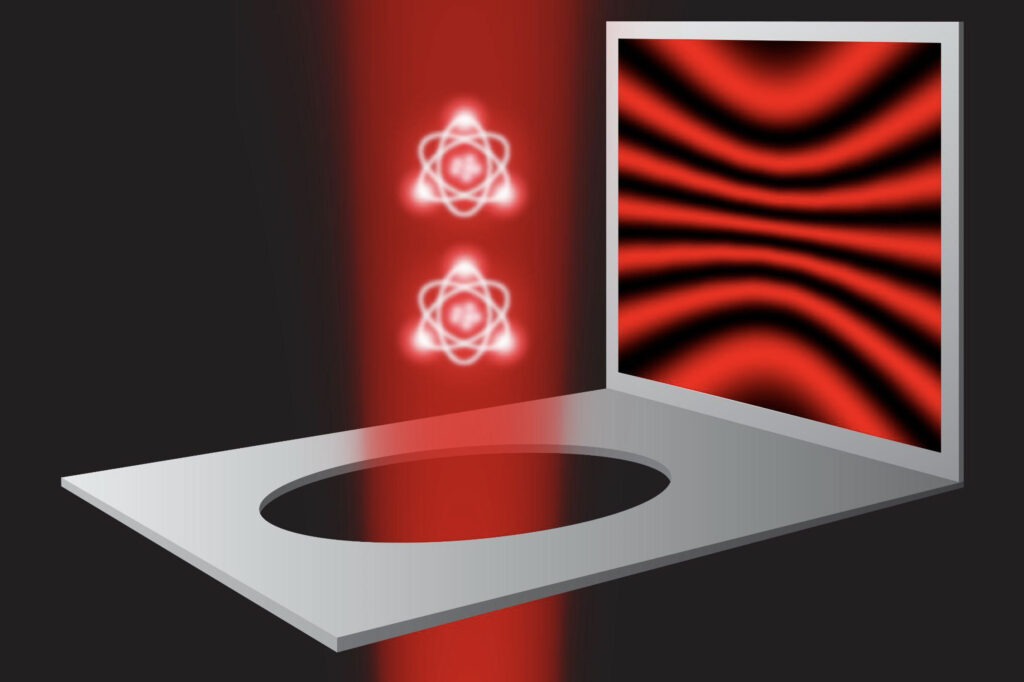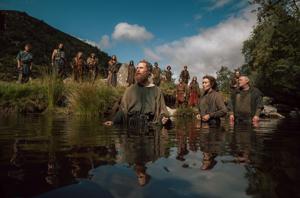
Researchers at the Massachusetts Institute of Technology (MIT) have successfully conducted an idealized version of the renowned double-slit experiment, confirming key aspects of quantum mechanics while challenging the theories of Albert Einstein. Their findings, published in the journal Physical Review Letters, demonstrate the dual nature of light with atomic-level precision and provide insights that Einstein himself could not have anticipated.
Revisiting a Quantum Classic
The double-slit experiment, originally performed by British scientist Thomas Young in 1801, illustrated how light behaves as both a wave and a particle. This fundamental experiment revealed that light can create interference patterns, which indicate wave-like behavior, while also exhibiting particle characteristics under certain conditions. The essence of the experiment lies in the fact that observing one nature obscures the other; if light is detected as particles, the interference pattern vanishes.
Historically, this experiment has sparked debates among physicists, notably between Einstein and Danish physicist Niels Bohr. In the 1927 debate, Einstein proposed that a photon should pass through only one slit, generating a measurable effect, while Bohr countered that any attempt to observe the photon’s path would destroy the interference pattern. Over the decades, various iterations of the experiment have consistently supported Bohr’s quantum mechanics theory.
MIT’s Groundbreaking Approach
The MIT team, led by Wolfgang Ketterle, has created what they describe as the most “idealized” version of the double-slit experiment to date. They utilized individual atoms as slits and employed weak beams of light, ensuring that each atom scattered only one photon. By configuring the atoms into various quantum states, the researchers were able to manipulate the information gathered about the photons’ paths.
In their experiment, which involved more than 10,000 ultracold atoms cooled to microkelvin temperatures, the team arranged the atoms in a crystal-like lattice using laser beams. This arrangement allowed them to closely observe how photons scattered off the atoms, mimicking the classic double-slit scenario. Ketterle noted, “What we have done can be regarded as a new variant of the double-slit experiment. These single atoms are like the smallest slits you could possibly build.”
The results confirmed existing quantum theories: the more information obtained about the photon’s path, the less visible the interference pattern became. The researchers demonstrated that interactions between photons and individual atoms could diminish wave interference, contradicting Einstein’s earlier assertions.
Examining Photon Behavior
The MIT team employed a method to adjust the “fuzziness” of the atoms, influencing whether the photons would behave more like particles or waves. By manipulating the confinement of the atoms with laser light, they could increase the likelihood of particle-like behavior. Their observations aligned with quantum theoretical predictions, further solidifying the understanding of light’s dual nature.
In a critical aspect of their experiment, the researchers tested Einstein’s idea of detecting photon paths without losing the interference pattern. They compared it to a scenario where the slits were suspended by springs, a common analogy used in previous experiments. Ketterle and his colleagues were able to replicate the interference phenomenon without the springs, indicating that the springs did not impact the particle-wave duality of light. This discovery underscores the importance of atomic “fuzziness” over traditional detection methods.
The study aligns with the upcoming International Year of Quantum Science and Technology in 2025, which commemorates the centennial of quantum mechanics. Co-author Yoo Kyung Lee remarked on the significance of their findings in the context of this celebration, stating, “It’s a wonderful coincidence that we could help clarify this historic controversy in the same year we celebrate quantum physics.”
This research received support from the National Science Foundation, the U.S. Department of Defense, and the Gordon and Betty Moore Foundation, marking a significant advancement in the understanding of quantum mechanics and the nature of light. As scientists continue to explore these fundamental principles, the implications for technology and physics remain profound.






